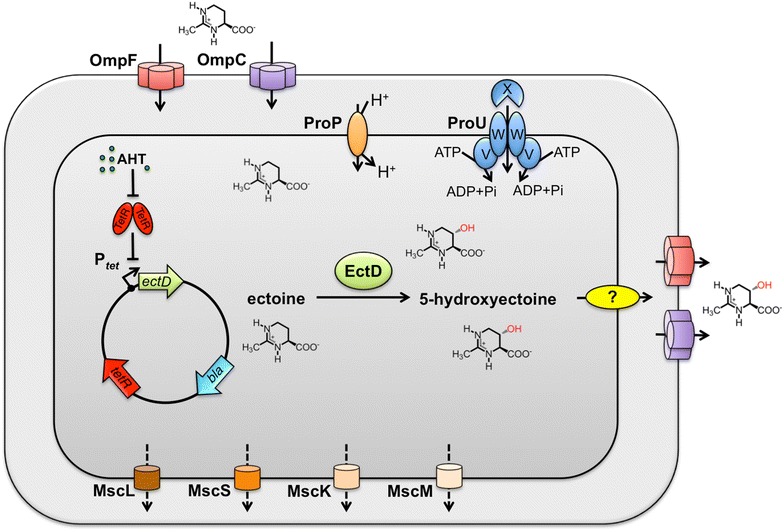Fig. 2.

Schematic representation of the microbial cell factory for the heterologous production of 5-hydroxyectoine. Ectoine available in the medium diffuses passively across the outer membrane of E. coli via the OmpC and OmpF porins into the periplasm. It is then actively transported across the cytoplasmic membrane into the E. coli cell via the two osmotically inducible compatible solute transporters, ProP and ProU. The gene (ectD) for the ectoine hydroxylase (EctD) is expressed from the TetR-controlled and AHT-responsive tet promoter present on the expression plasmid. The newly synthesized EctD enzyme hydroxylates ectoine to 5-hydroxyectoine, most of which is then released into the growth medium via an unknown mechanism. Various types of mechanosensitive channels (MscL, MscS, MscK, MscM) operating in E. coli are indicated
